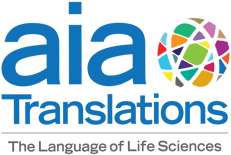Unlocking New Horizons in Medical Translation with Multimodal Translation
AI • Feb 3, 2025 12:00:00 PM

In the ever-evolving field of medical translation, precision and context are paramount. Whether translating patient records, pharmaceutical information, or instructional materials for medical devices, the consequences of inaccuracies can be critical. Enter multimodal translation — a groundbreaking approach poised to revolutionize the way we handle complex, context-rich translation tasks in the medical field.
What is Multimodal Translation?
Multimodal translation is the process of translating text between languages using additional sources of information, or modalities, such as images, audio, or video. This method goes beyond traditional text-based translation, integrating visual and auditory context to ensure translations are more accurate, nuanced, and culturally appropriate.
For instance, a multilingual instruction manual for a medical device often includes text alongside diagrams or images. Multimodal translation allows a system to interpret these images alongside the text to better convey the intended meaning.
How Does Multimodal Translation Work?
Multimodal translation systems leverage advanced machine learning algorithms that process and combine inputs from various modalities. Here’s a simplified overview of how it works:
- Data Input: The system receives text, along with associated modalities like images or audio recordings.
- Feature Extraction: Neural networks analyze each modality to extract meaningful features. For example, text may be analyzed for syntax and semantics, while images are processed to identify objects or contexts.
- Cross-Modal Alignment: The system aligns data from different modalities to identify relationships. For example, it might link the word “lung” in a medical report to an X-ray image of the chest.
- Translation: Using the combined contextual data, the system generates translations that are more accurate and contextually appropriate.
- Validation: Advanced models incorporate feedback loops or human-in-the-loop systems for validation and refinement.
The Pros of Multimodal Translation in the Medical Field
- Enhanced Accuracy: By incorporating visual and auditory context, multimodal systems reduce ambiguity and improve precision, especially for technical terms or jargon.
- Improved User Understanding: Diagrams, charts, and other visuals accompanying medical instructions can be better interpreted, ensuring the translation conveys the intended message.
- Cultural Sensitivity: Multimodal systems can adapt translations to align with cultural nuances by interpreting visual or auditory context.
- Reduced Risk of Errors: For critical materials like dosage instructions or surgical procedures, multimodal translation ensures higher reliability.
Challenges of Multimodal Translation
Despite its potential, implementing multimodal translation in the medical field presents several challenges:
- Data Scarcity: Training multimodal systems requires large, labeled datasets that combine text with other modalities (e.g., annotated medical images or videos). Such datasets are often scarce.
- Complex Alignment: Establishing relationships between text and other modalities can be computationally intensive and error prone.
- Domain-Specific Expertise: Medical translation requires specialized knowledge. Integrating this expertise into multimodal systems is a complex but essential task.
- Ethical Concerns: Handling sensitive medical data across multiple modalities raises privacy and security concerns.
Implementing Multimodal Translation in Medical Translation
To incorporate multimodal translation effectively into medical translation workflows, companies can take the following steps:
- Leverage Existing Models: Use pre-trained multimodal AI models as a foundation and fine-tune them with medical-specific data.
- Curate High-Quality Datasets: Develop and curate datasets that combine medical text with associated images, diagrams, or audio annotations.
- Collaborate with Experts: Work closely with medical professionals to ensure translations are accurate and meet regulatory standards.
- Integrate Human Oversight: Combine AI systems with expert human translators for validation, especially for critical content.
- Focus on Compliance: Ensure adherence to regulations like HIPAA or GDPR when handling multimodal medical data.
Interesting Details about Multimodal Translation
- Real-Time Translation: Emerging technologies are enabling real-time multimodal translation, allowing medical professionals to communicate across languages during live consultations or surgeries.
- Assistive Applications: Multimodal translation supports assistive technologies, like translating sign language from video for deaf patients.
- Broader Applications: Beyond written text, multimodal systems can interpret and translate video tutorials, enabling medical device manufacturers to produce multilingual instructional videos efficiently.
The Future of Multimodal Translation in Medical Fields
As technology advances, multimodal translation will play a pivotal role in overcoming language barriers in healthcare. However, it is important to note that this technology is still under development and not yet widely available for commercial use. By integrating sophisticated AI systems with human expertise, medical translation companies can ensure the highest standards of accuracy and accessibility, ultimately improving global healthcare outcomes.
The journey toward fully realizing the potential of multimodal translation may be complex, but the rewards are undeniable. With continuous innovation and collaboration, this technology promises to redefine the standards of precision and accessibility in medical translation.
